Abstract
1. The adaptive properties of salamander of olfactory receptors have been analysed in extracellular unit recordings. Stimulation has been by step pulses of odour of varying durations for 1--10 sec. 2. The most common response was a prolonged impulse discharge that continued throughout the duration of the pulse and terminated abruptly within 1 sec of the end of the pulse. The interval for termination was relatively independent of the pulse duration. Pulses were frequently followed by a period of impulse inactivity lasting 1--3 sec, usually independent of previous pulse duration. 3. The impulse discharges were typically slowly adapting. Initially, during the first 1--2 sec, the frequency rose to 5--10 impulses/sec, at threshold concentration. In some cases, the initial level was maintained throughout the pulse, with little or no adaptation. More commonly, there was a distinct initial phasic peak, followed by decay to a lower level of 4--8 impulses/sec, which was maintained during the pulse. It was concluded that most olfactory receptors are slowly adapting, with variable phasic responsiveness dependent on odour concentration and other factors. 4. Reductions in impulse activity, compared with background, during a pulse were rarely seen. Methods for increasing the level of background activity and the use of very long duration pulses were necessary in order to bring out this type of response. Uniformly reduced activity throughout a pulse was seen clearly in only one case. A pattern consisting of a waning and then recovery of impulse frequency during a pulse was also observed in rare cases. 5. The results have shown that olfactory receptor discharges characteristically have a relatively precise relation to step pulses of odour of varying duration. The properties of the response have implications for the steps involved in the overall processes of activation and inactivation of receptor mechanisms at the olfactory mucosa.
Full text
PDF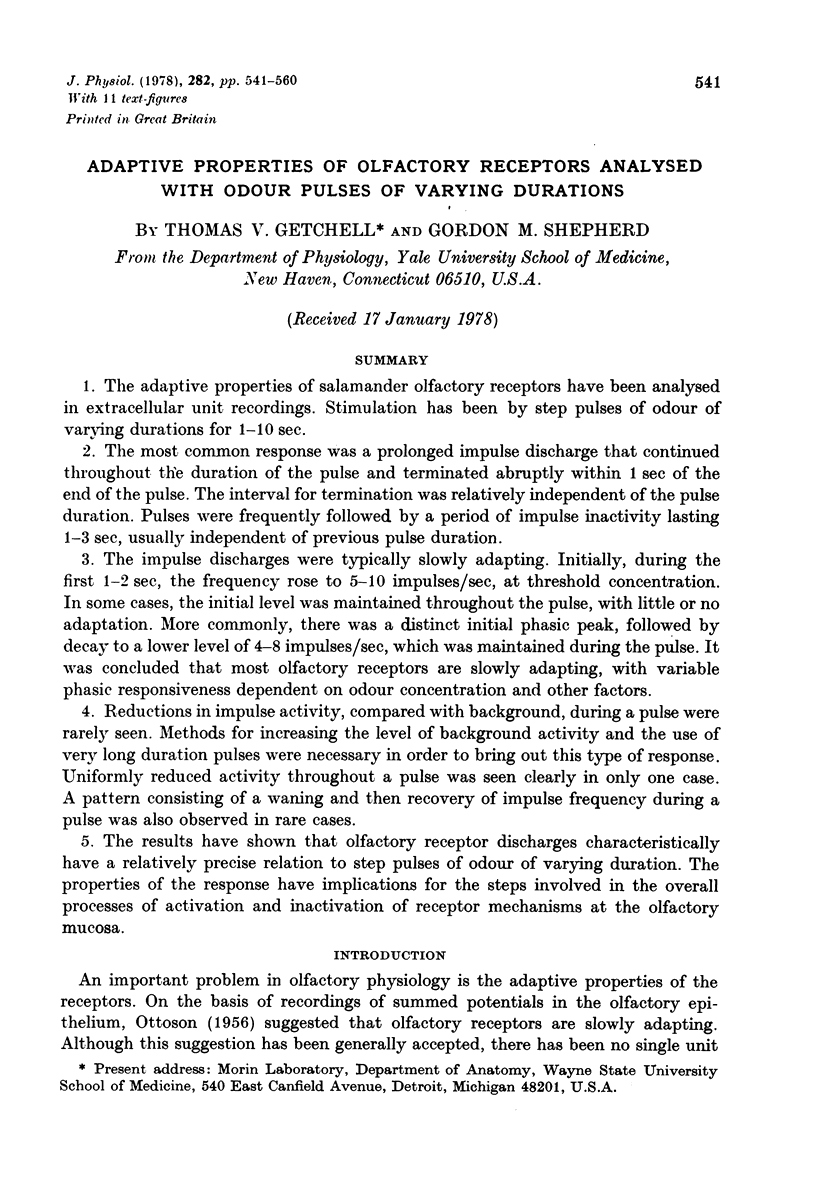
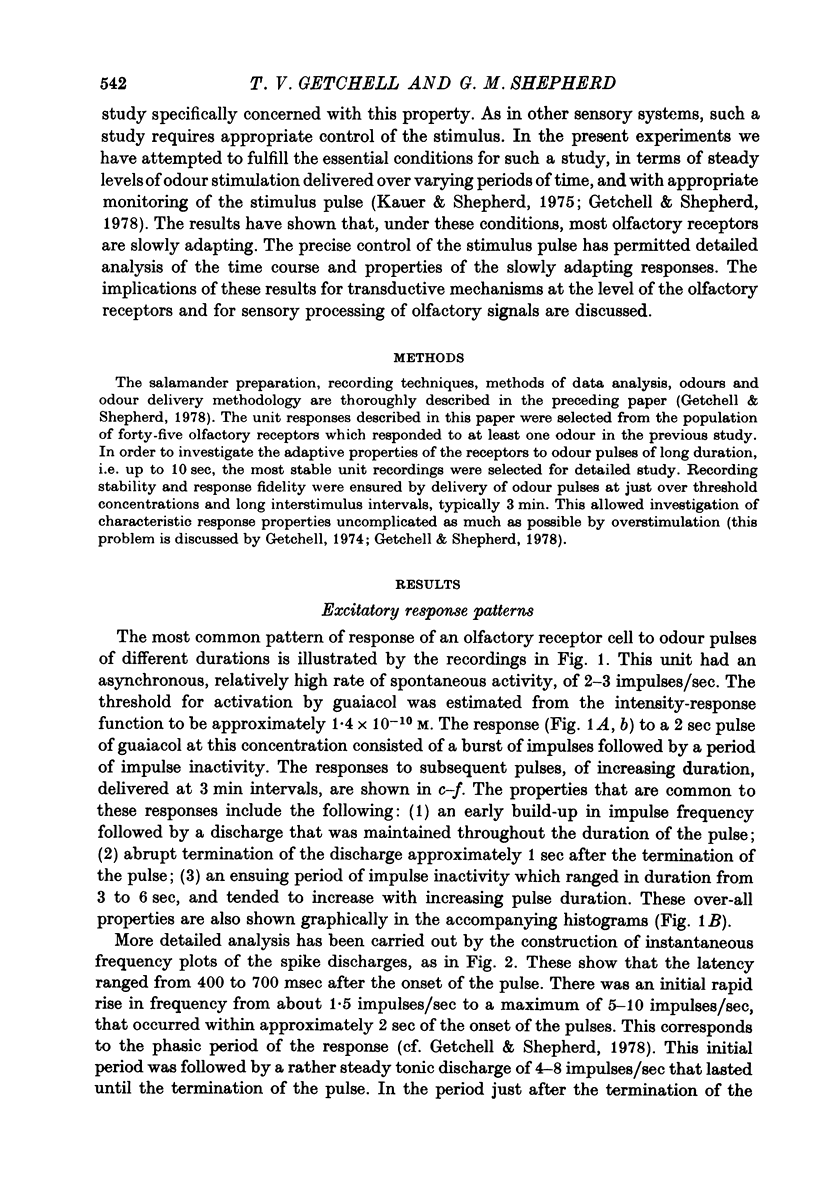
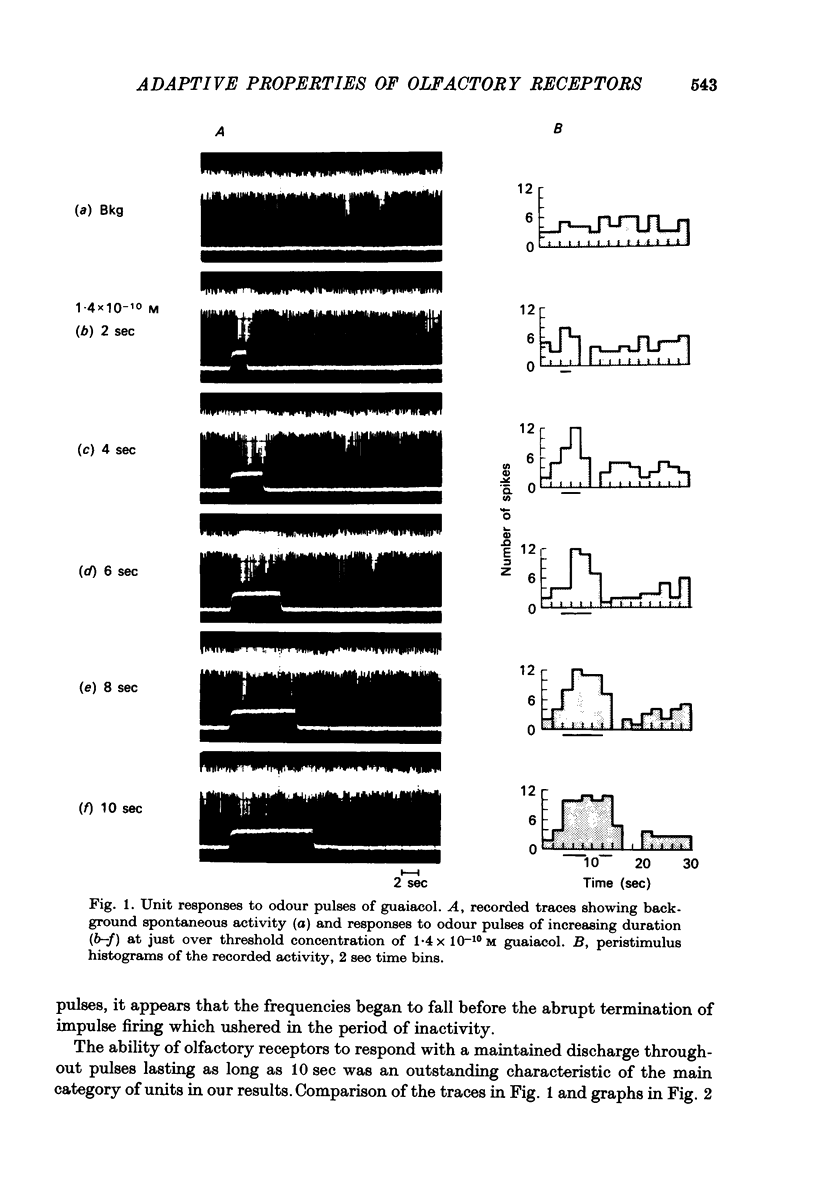
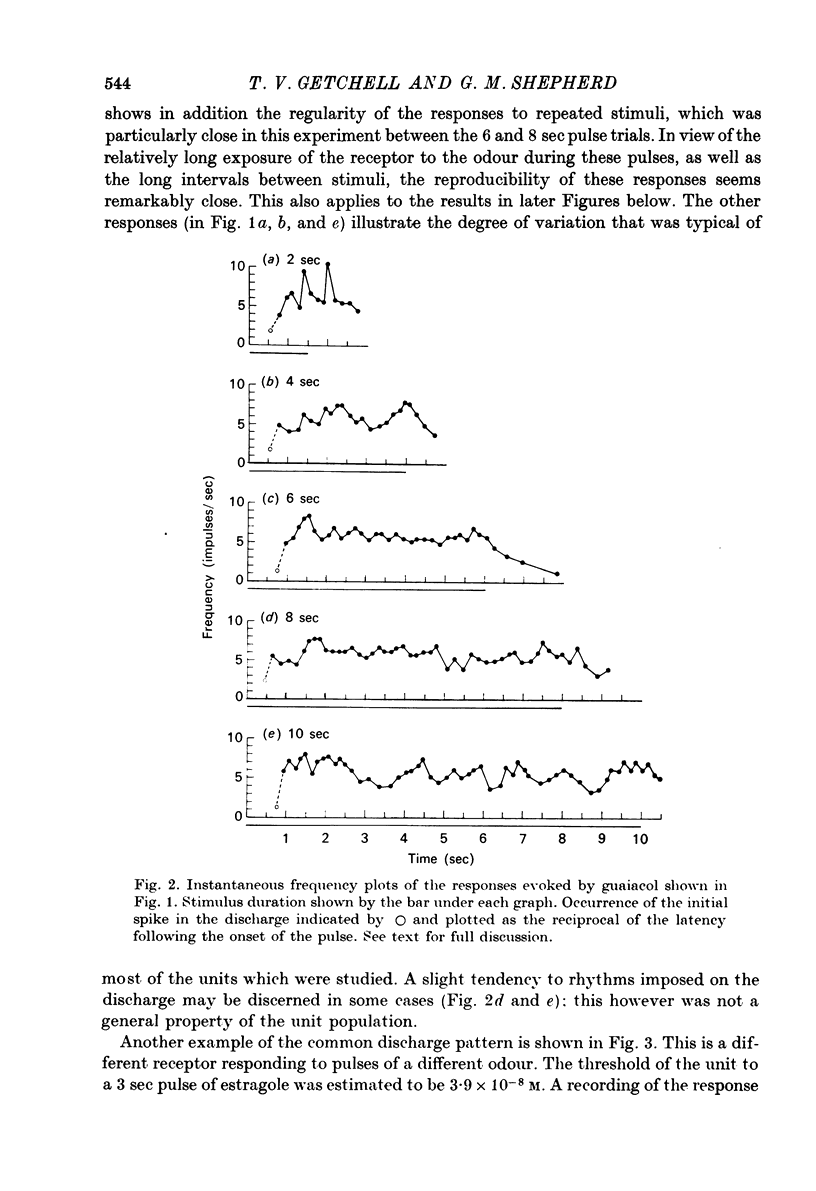
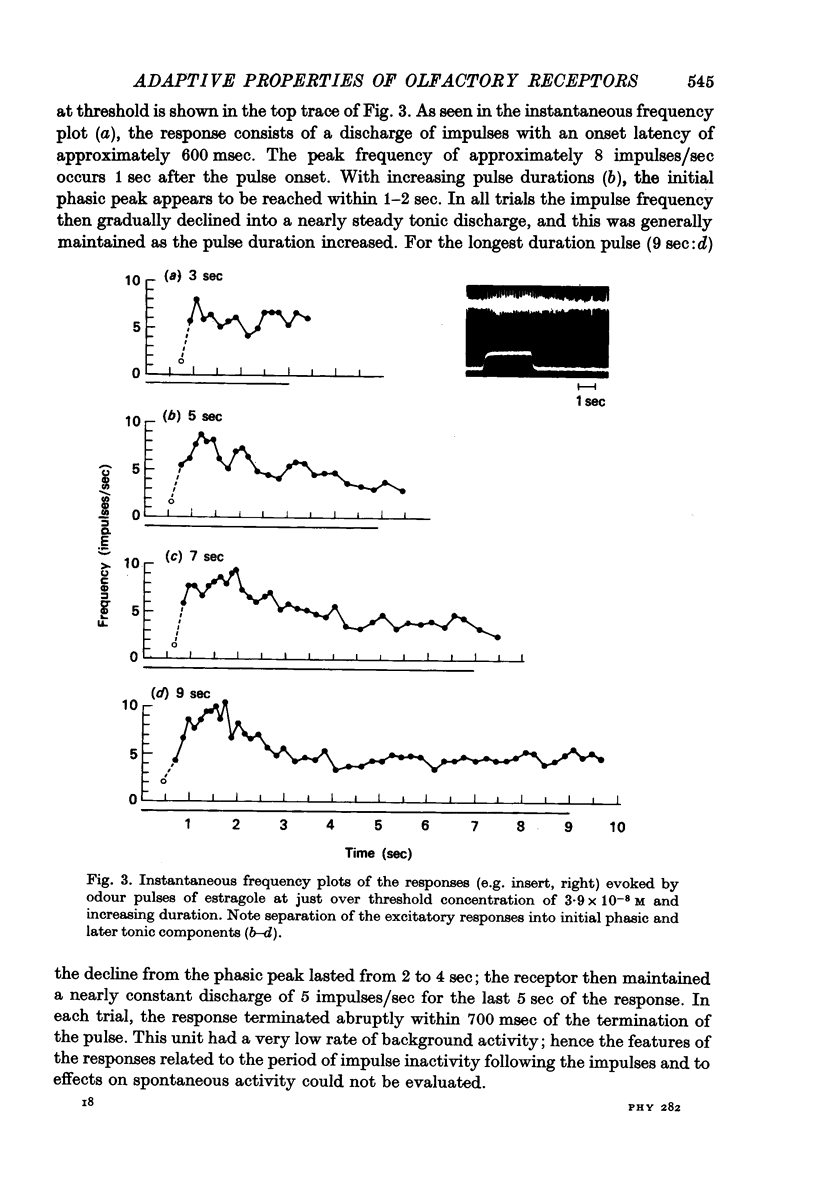
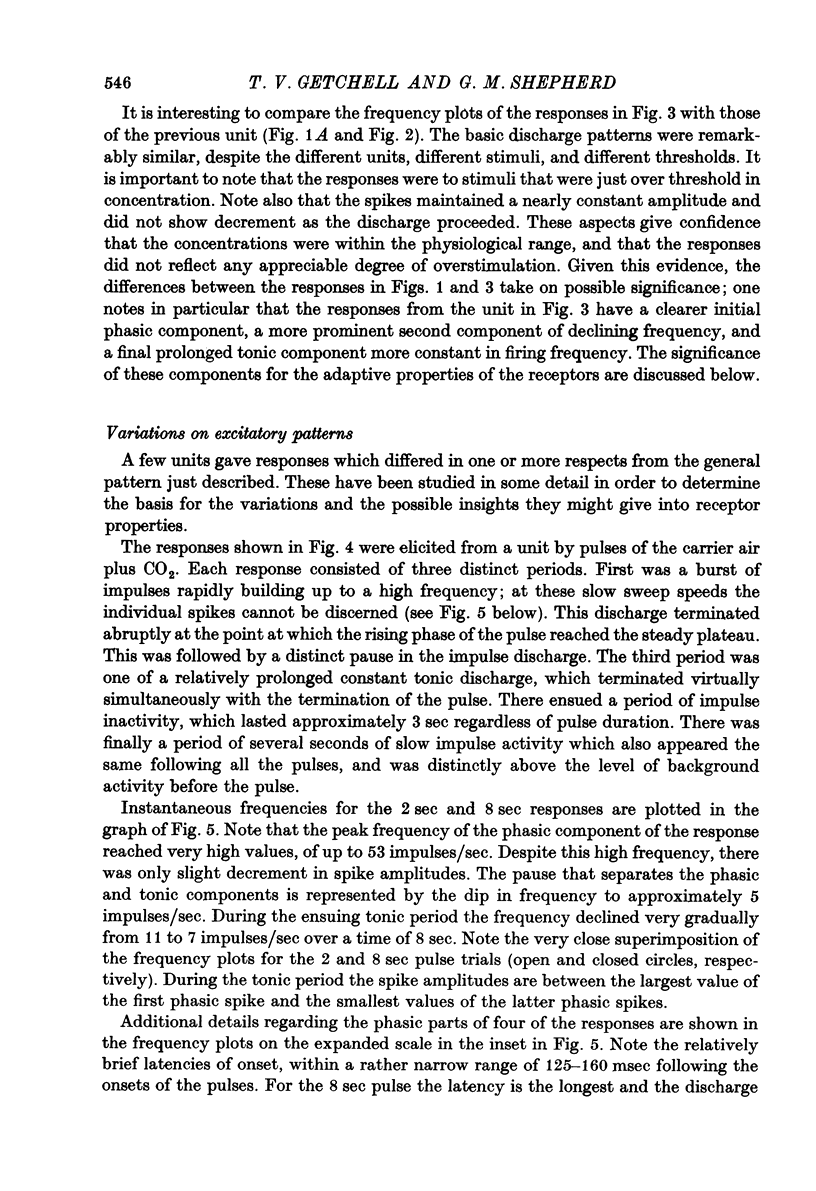

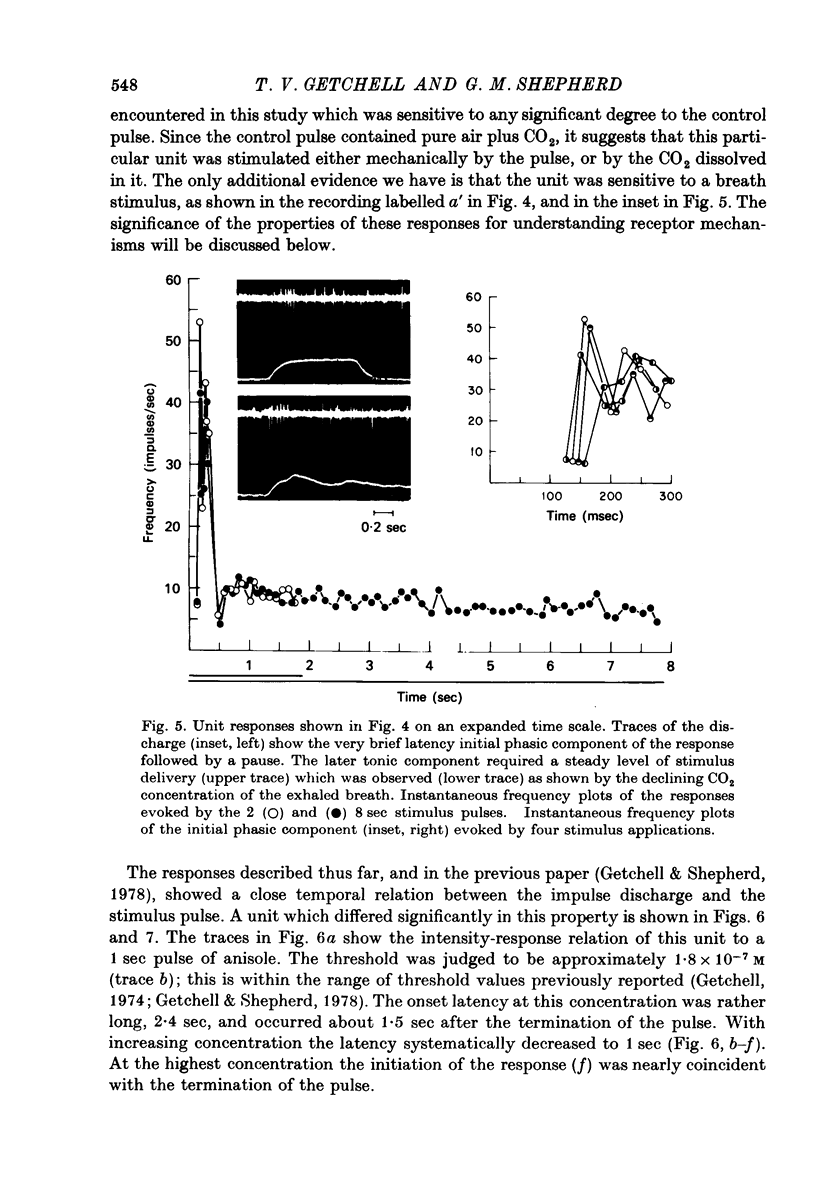
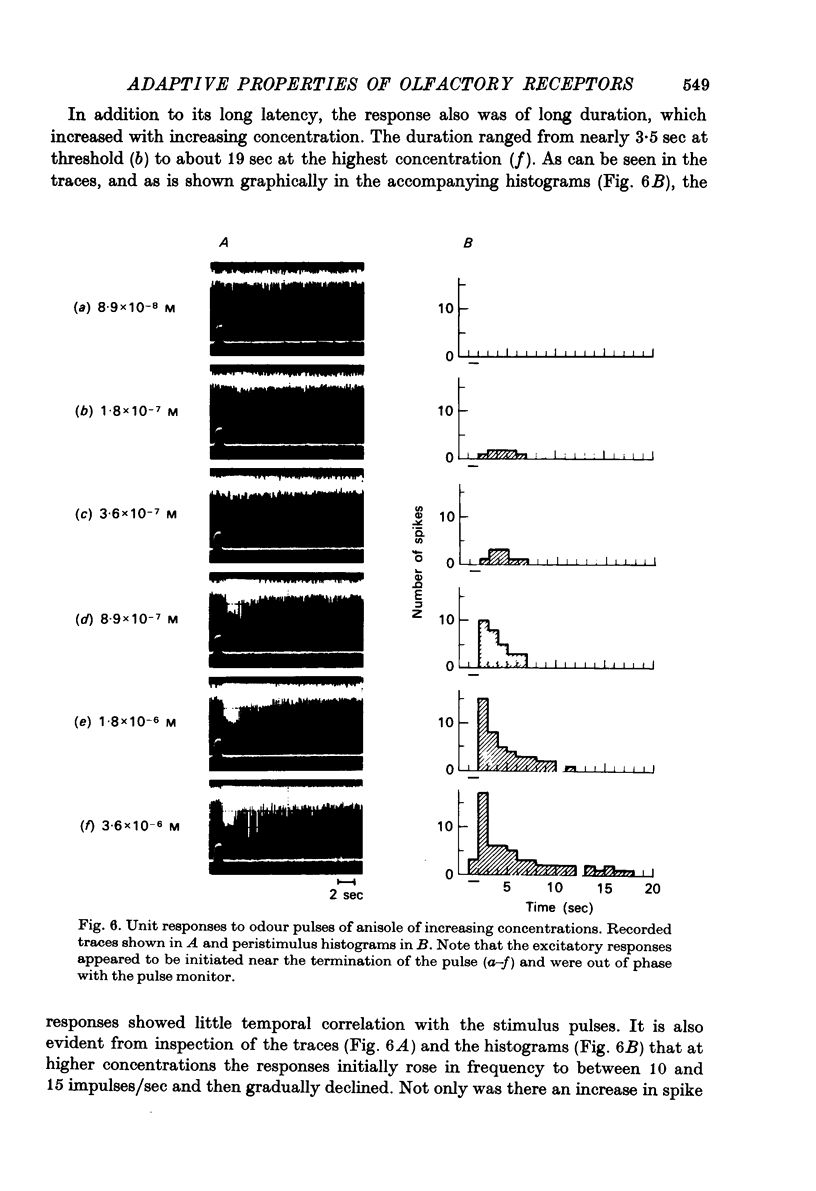
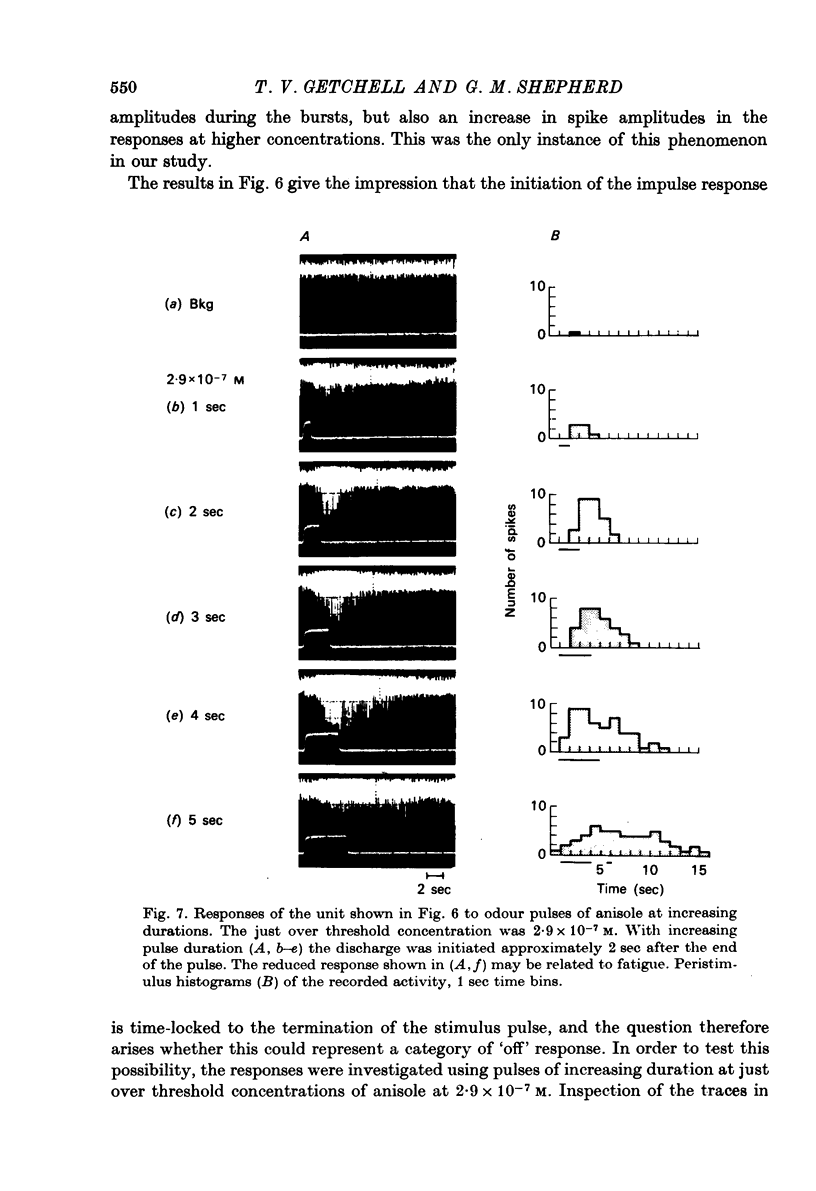
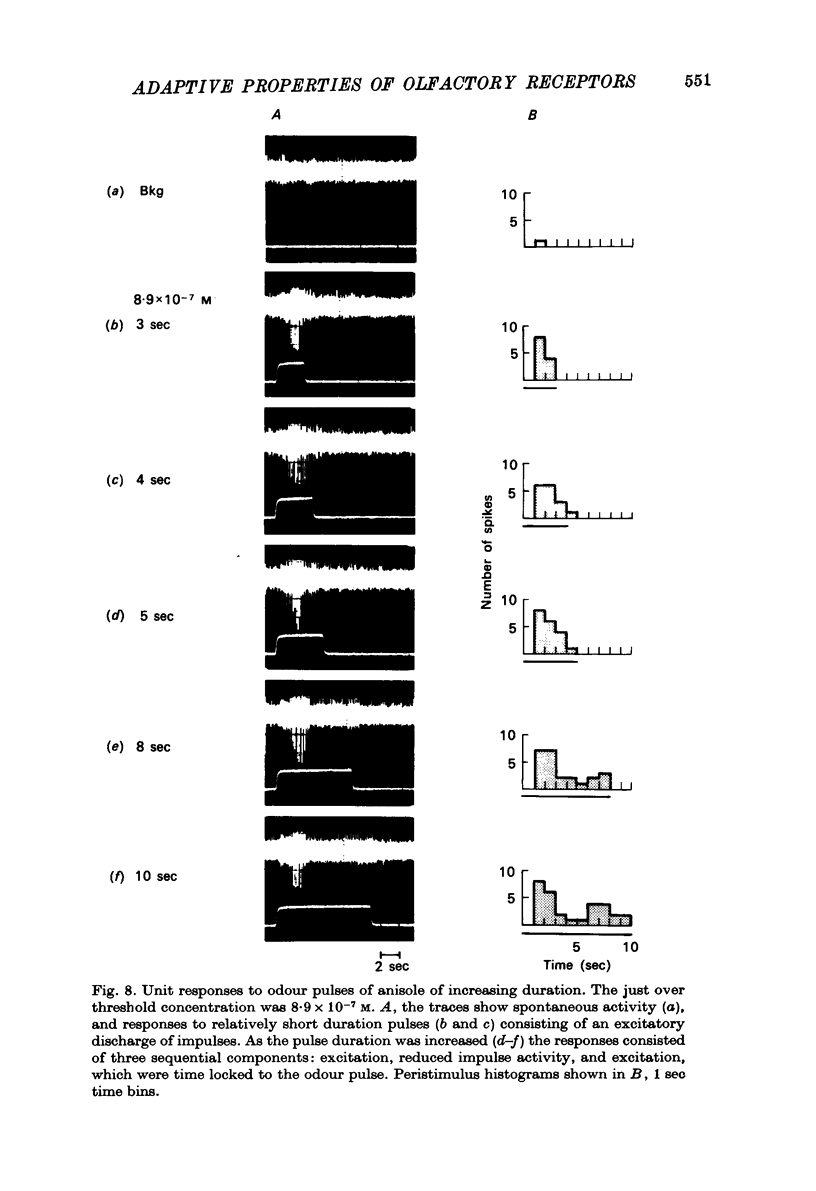
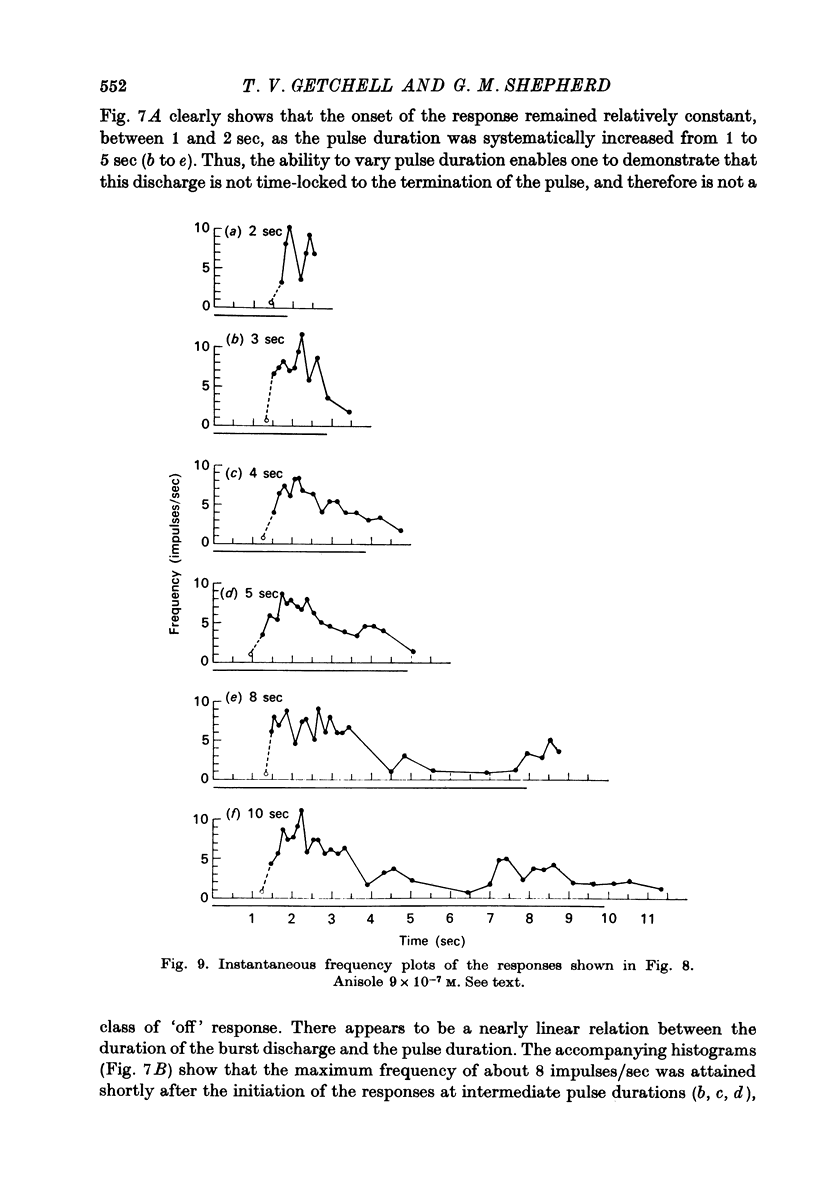
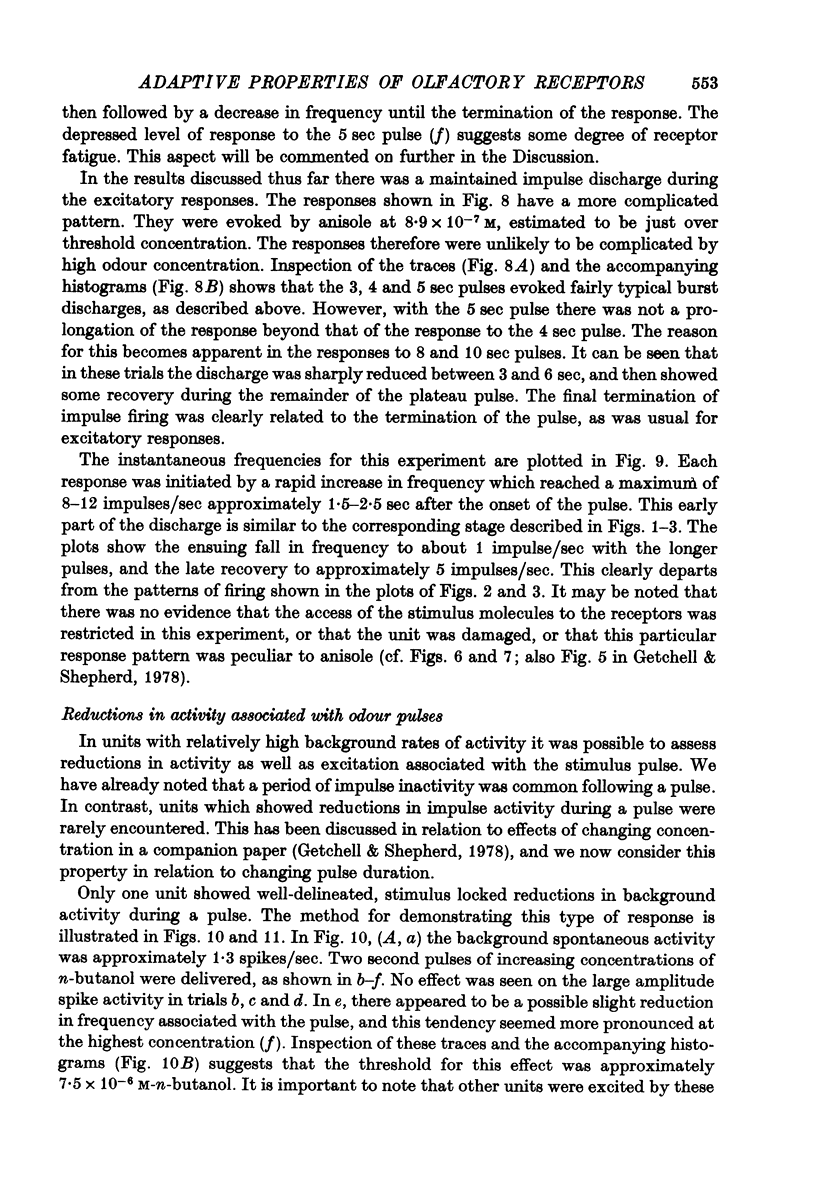
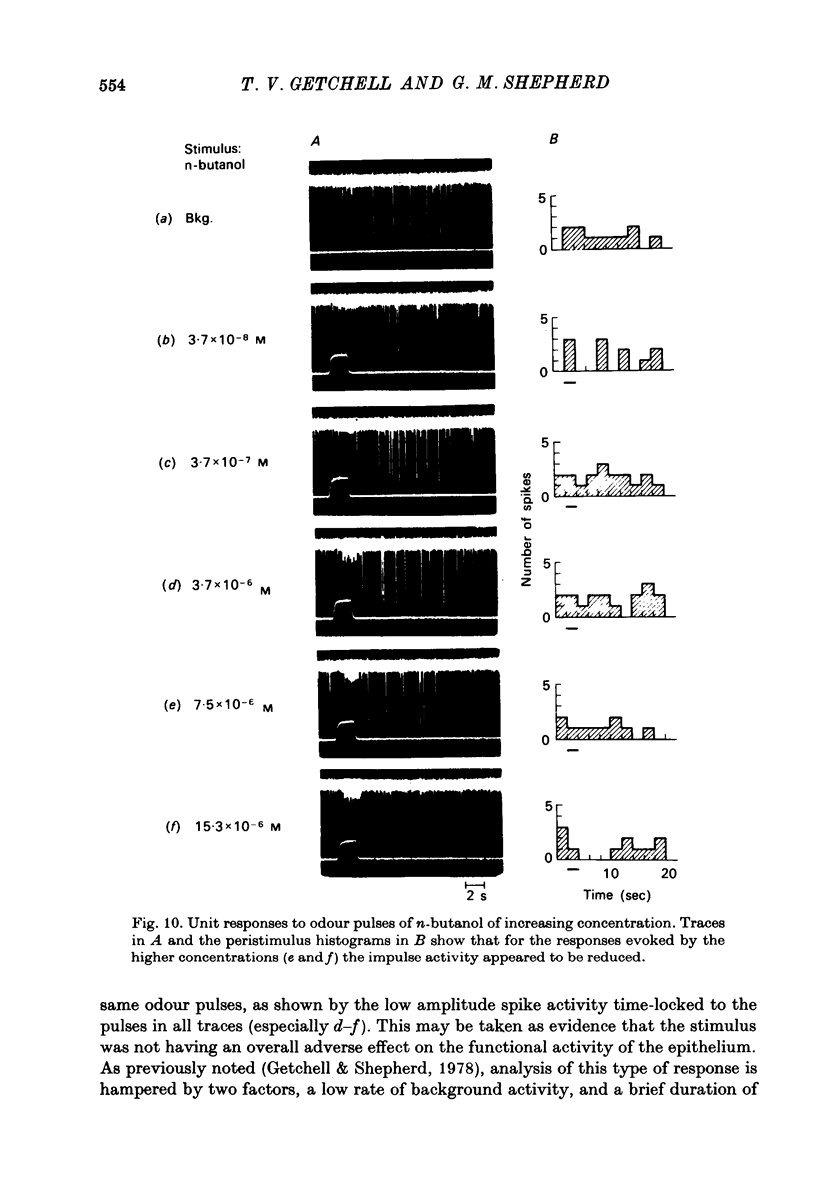
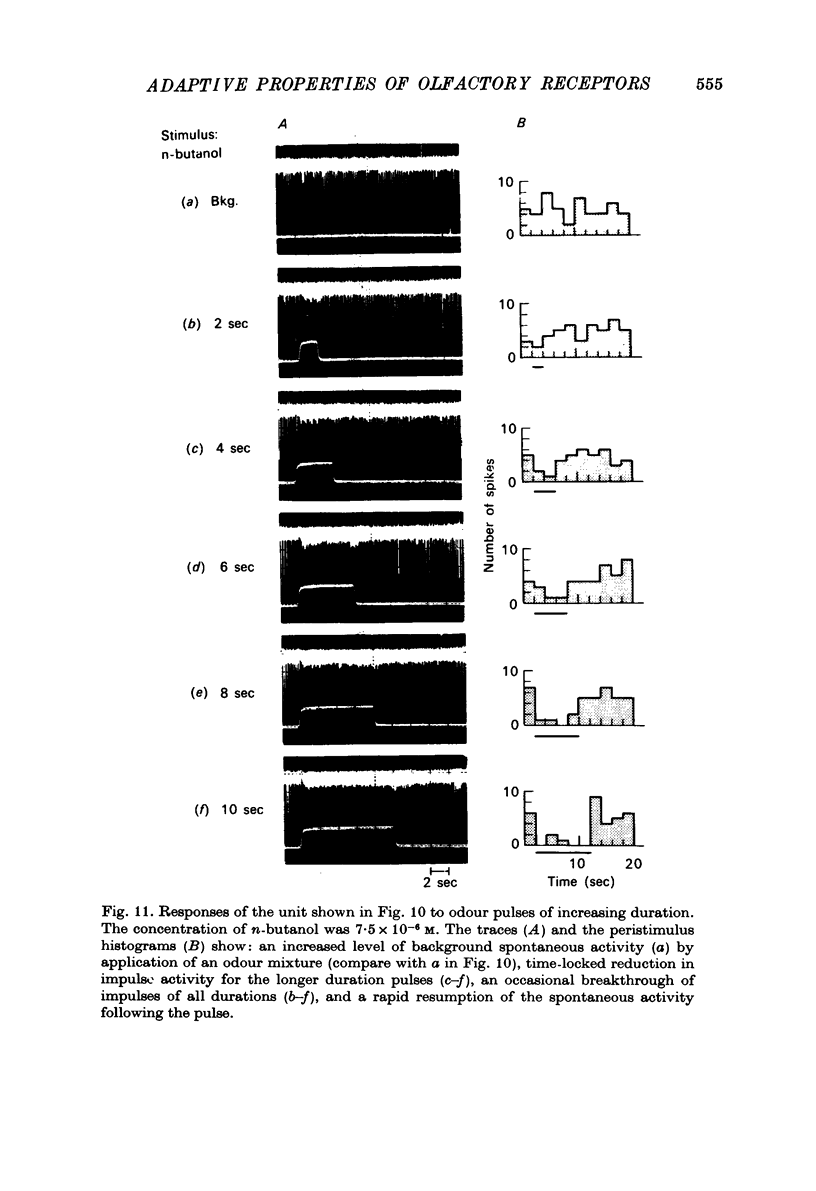
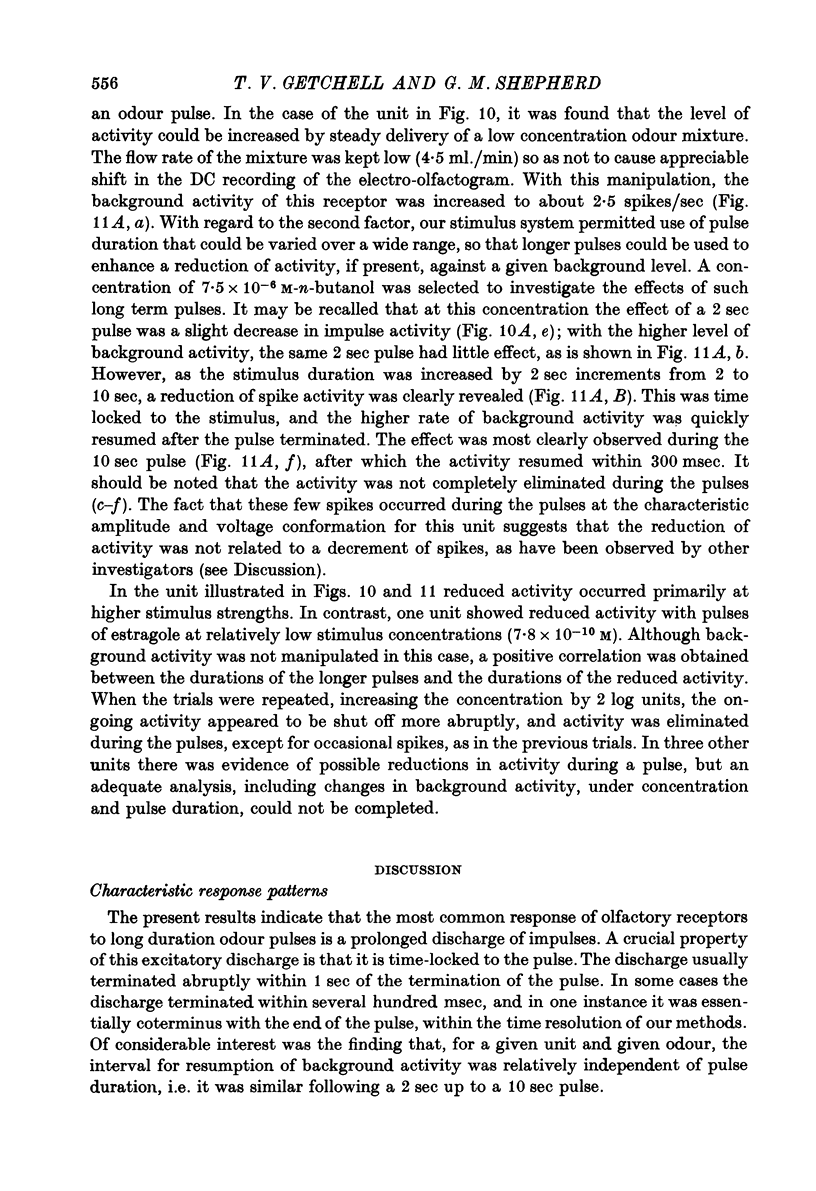
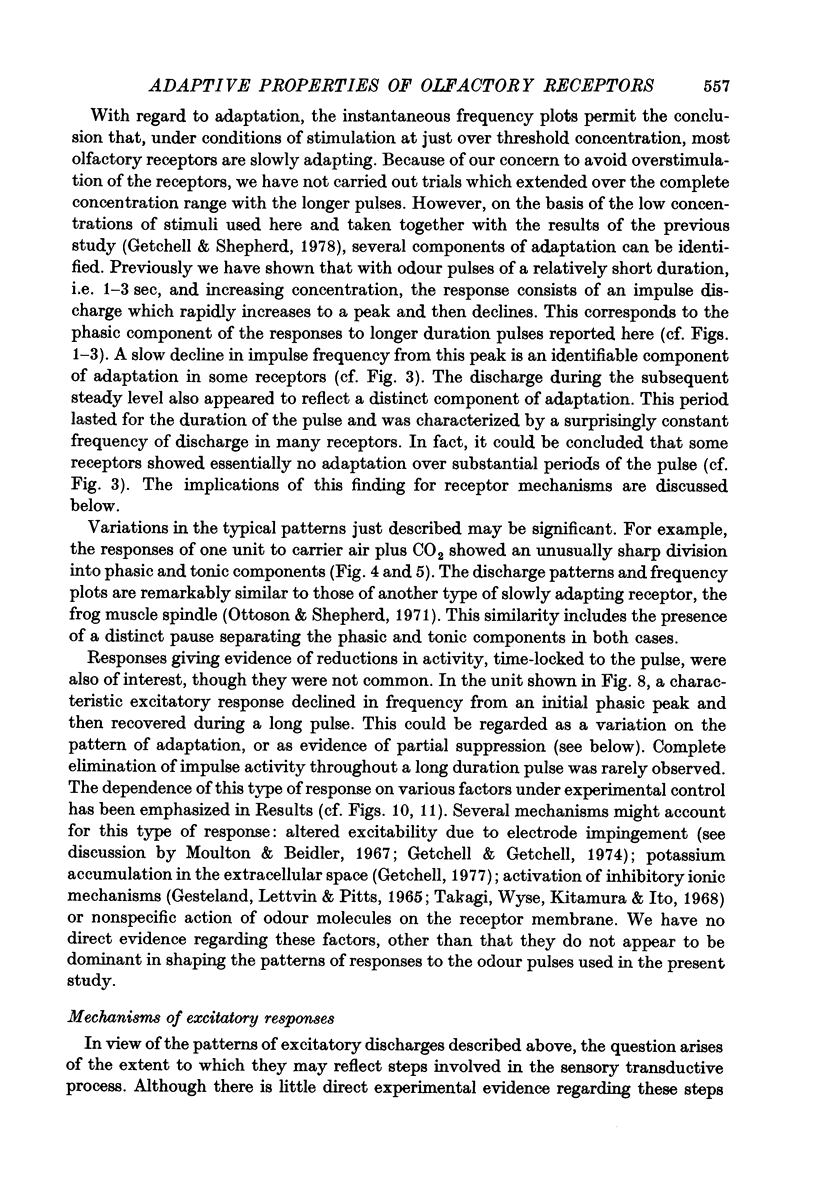
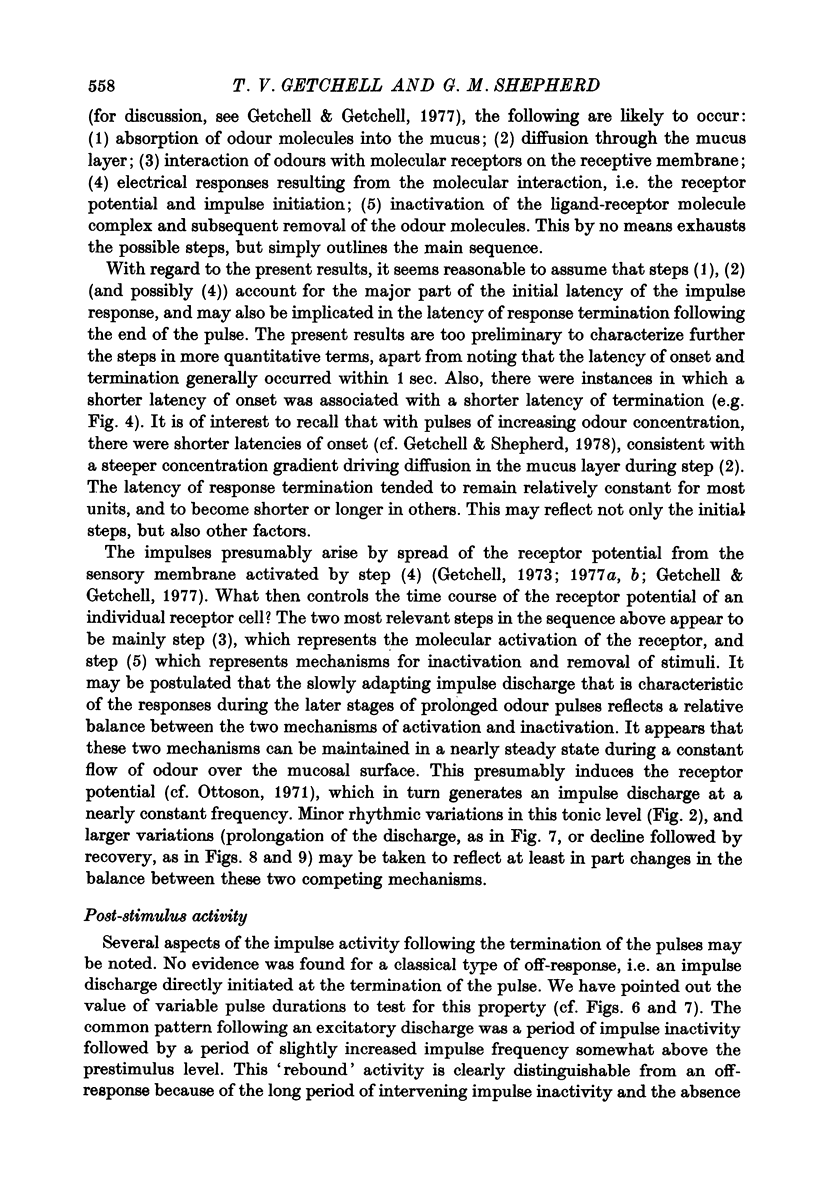
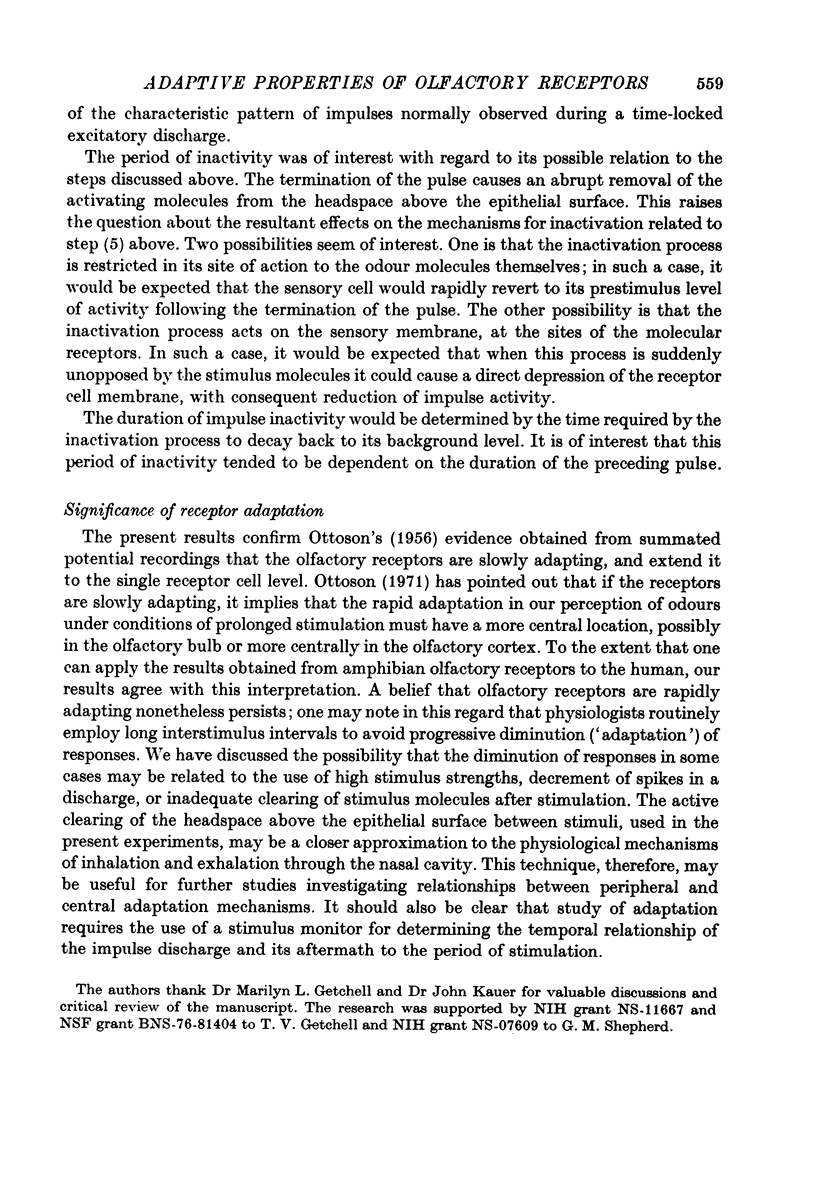
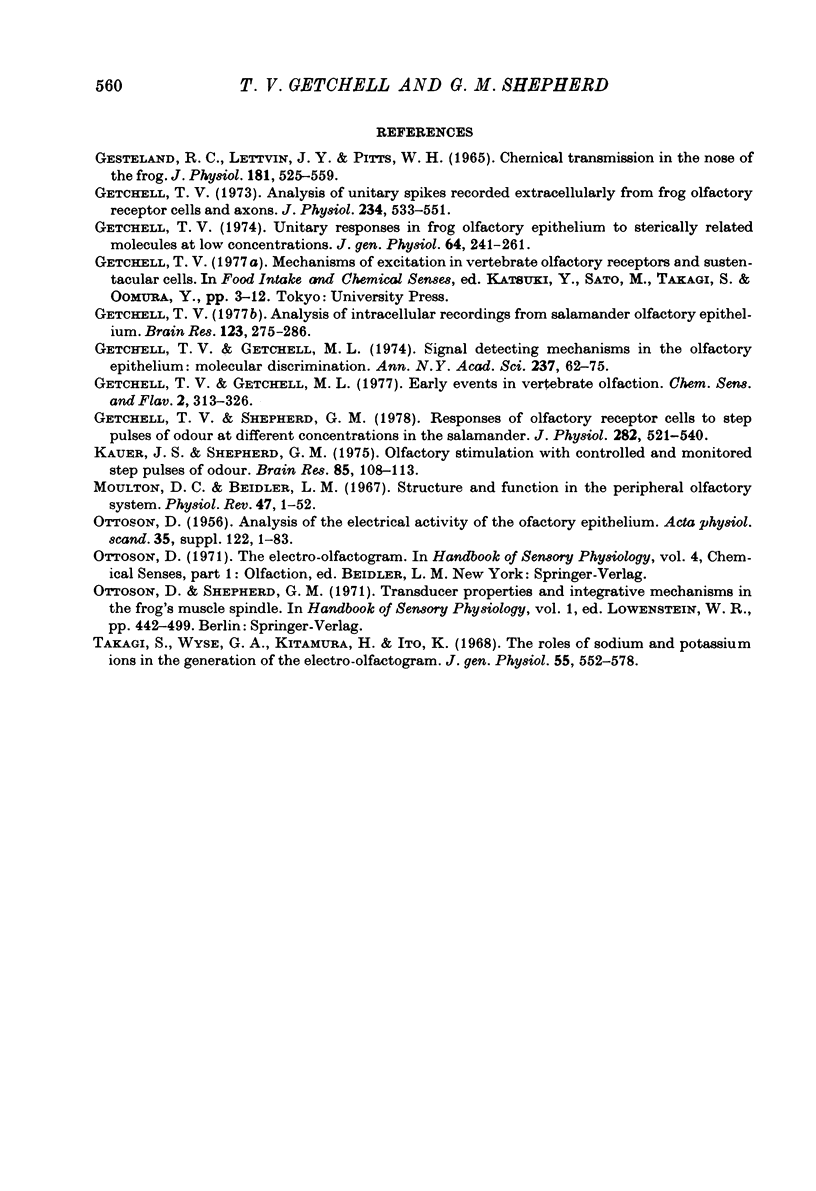
Selected References
These references are in PubMed. This may not be the complete list of references from this article.
- Gesteland R. C., Lettvin J. Y., Pitts W. H. Chemical transmission in the nose of the frog. J Physiol. 1965 Dec;181(3):525–559. doi: 10.1113/jphysiol.1965.sp007781. [DOI] [PMC free article] [PubMed] [Google Scholar]
- Getchell T. V. Analysis of intracellular recordings from salamander olfactory epithelium. Brain Res. 1977 Mar 11;123(2):275–286. doi: 10.1016/0006-8993(77)90479-6. [DOI] [PubMed] [Google Scholar]
- Getchell T. V. Analysis of unitary spikes recorded extracellularly from frog olfactory receptor cells and axons. J Physiol. 1973 Nov;234(3):533–551. doi: 10.1113/jphysiol.1973.sp010359. [DOI] [PMC free article] [PubMed] [Google Scholar]
- Getchell T. V., Getchell M. L. Signal-detecting mechanisms in the olfactory epithelium: molecular discrimination. Ann N Y Acad Sci. 1974 Sep 27;237(0):62–75. doi: 10.1111/j.1749-6632.1974.tb49844.x. [DOI] [PubMed] [Google Scholar]
- Getchell T. V., Shepherd G. M. Responses of olfactory receptor cells to step pulses of odour at different concentrations in the salamander. J Physiol. 1978 Sep;282:521–540. doi: 10.1113/jphysiol.1978.sp012479. [DOI] [PMC free article] [PubMed] [Google Scholar]
- Getchell T. V. Unitary responses in frog olfactory epithelium to sterically related molecules at low concentrations. J Gen Physiol. 1974 Aug;64(2):241–261. [PMC free article] [PubMed] [Google Scholar]
- Kauer J. S., Shepherd G. M. Olfactory stimulation with controlled and monitored step pulses of odor. Brain Res. 1975 Feb 21;85(1):108–113. doi: 10.1016/0006-8993(75)91014-8. [DOI] [PubMed] [Google Scholar]
- Moulton D. G., Beidler L. M. Structure and function in the peripheral olfactory system. Physiol Rev. 1967 Jan;47(1):1–52. doi: 10.1152/physrev.1967.47.1.1. [DOI] [PubMed] [Google Scholar]
- OTTOSON D. Analysis of the electrical activity of the olfactory epithelium. Acta Physiol Scand Suppl. 1955;35(122):1–83. [PubMed] [Google Scholar]
- Takagi S. F., Wyse G. A., Kitamura H., Ito K. The role of sodium and potassium ions in the generation of the electro-olfactogram. J Gen Physiol. 1968 Apr;51(4):552–578. doi: 10.1085/jgp.51.4.552. [DOI] [PMC free article] [PubMed] [Google Scholar]


